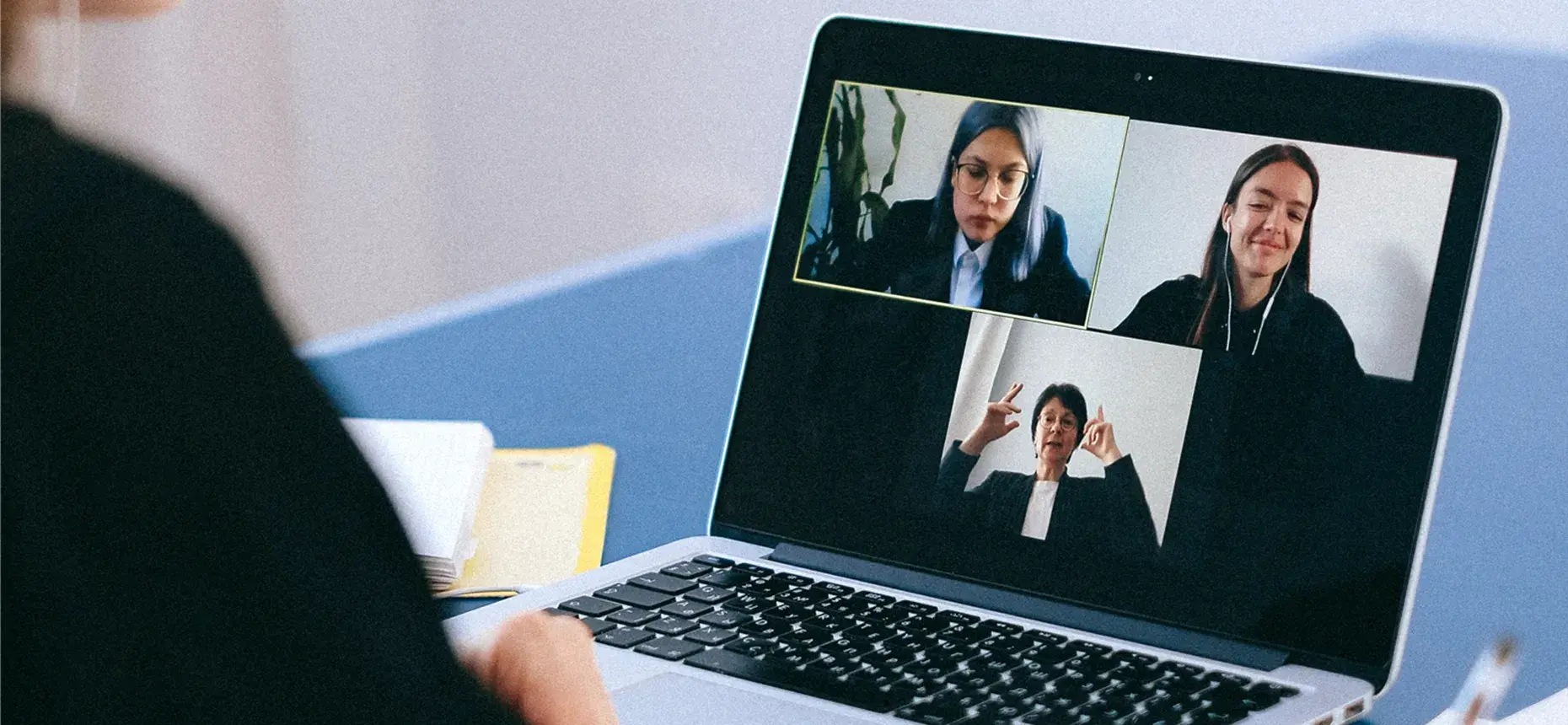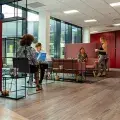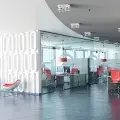Time is a funny thing, it can seem as though a day doing something uninteresting can take forever yet other more historical events can seem only a few years ago.
For instance, did you know 2022 was the 50th anniversary of the premiere of The Godfather and 50 years since the first broadcasting of Mastermind by the BBC? It is 25 years since Hong Kong was handed back to China in 1997, in the same year the first Harry Potter book was published.
When we review past events, we inevitably take a somewhat nostalgic look back at what Britain, the world and we looked like in the past and how everything has evolved. From a business point of view, my career goes back to 1983 – just coming up to 40 years and it is fascinating how much has changed in that period of time and interesting to reflect on how this has influenced working practice and employee wellbeing.
Thinking back to the 80s, working in financial services was very much office- and paper-based. To coin a phrase, it was a much simpler time. Communication with clients involved writing a letter, on headed paper and putting it in the post. Talking to clients by phone was limited because the contact numbers available were landlines and therefore, during office hours, most clients could not be reached. Even intra-office communication often involved writing a memo and sending it through internal mail. As a result, the pace of work and workflow was dictated by postal delivery once or twice per day rather than a constant stream of communication. In many offices, this allowed workloads to be managed and controlled by physically handing out client files to be worked on. Office computerisation was still in its infancy and mainly revolved around running paper statements/reports (often overnight), which were then processed and posted to clients. It might be nostalgia, but it seemed that the pace of work was slower and less pressured. Having physical stacks of files on your desk or papers in an in-box allowed easy assessment of progress and workload. Most employees could leave their working life in the office when they left for the evening and those that did take work home were limited in how much they could do by the number of files they could carry.
Do not get me wrong, there were still situations of working excessive hours but often (and for most employees), once you left the physical building, the work/life balance flipped in favour of life. The demarcation was much clearer – being contacted by your employer out of office hours would either mean that he/she was a personal friend, or the office was burning down!
During the later 80s and early 90s, there was rapid and significant change in office life as businesses adopted new technology. In very quick succession, written communication moved from being exclusively typed letters and memos, which needed to be physically posted, to delivery by telex and fax (younger readers might need to use Google!), allowing instant transmission. On top of this, dramatic improvement to mobile phone technology and coverage meant they were becoming increasingly common in business. I got my first Motorola, the size of a house brick, in 1992. Greater connectivity and quicker communications heralded the start of the ‘always on’ working style.
When I think back, the next major change in communication was not perhaps as dramatic as I originally thought. Email started to be used in offices around 1989 with the launch of Lotus Notes; Outlook followed in 1993. In these early days, connectivity to the internet was hardwire or dial up so, for most employees, email access was only available on work computers and when physically in the office. Initially, email replaced intra-office memos and other professional communications, while letters were still the main communication tool to clients. Over the next few years, this all changed. The arrival of WiFi connectivity, laptops and smartphones allowed employees to be unchained from the office and most communication to become paperless. The age of constant email traffic and ‘always on’ culture had arrived; but for all the well-known negatives surrounding this, is it all bad?
The events over the last 24 months, lockdowns and working from home, would not have been so manageable if we did not have access to the levels of remote technology currently available.
In March 2020, many businesses were able to almost seamlessly switch from the office to working from home. This enabled businesses to keep functioning but there was a downside. Employees trying to juggle home and work, home schooling and childcare often felt overwhelmed. Some worked excessively long hours just to keep up and some will have been working in far from ideal environments – bedrooms, kitchens etc., which may have proved problematic for both physical and mental wellbeing.
Employers are rightly focused on efforts to support and enhance employee wellbeing as part of a general attempt at rebalancing work/life pressures to reduce stress and its effects on mental wellbeing. Some, with good intention, are banning ‘out of hours’ emails and trying to encourage employees to switch off at 5.00pm. These efforts are admirable but ‘one size fits all’ policies can have unforeseen consequences. A study by University of Sussex (http://www.sussex.ac.uk/broadcast/read/50487) published in 2021 found that this type of wellbeing initiative can adversely impact some employees by restricting flexible working and personal control over workloads. We tend to see technology such as email negatively from a wellbeing point of view but, used correctly, for some it can help with flexibility and healthier working habits.
Continuous connectivity to the workplace via email, rather than trapping employees into an ‘always on’ prison with longer hours and poor work habits, can, if used intelligently, set employees free to thrive and take ownership of their own workloads and work/life balance.
Remote access means less time commuting or sat at an office desk. Dealing with emails at 7.30 in the morning or 7.30 in the evening might allow employees the option to enjoy the school run, meet their partner for lunch, go to a child’s sports day or even just go for a walk in the park. We all know work has to be done but technology can liberate us from the ‘9-to-5’ schedule and provide greater flexibility, a better work/life balance and improved wellbeing.
For employers, the crux of the situation is being willing to accept individual working methods and, if practical, being able to accommodate them into a flexible working model. The key is understanding what works for the individual. One size does not fit all. Being flexible with working arrangements and providing support from corporate wellbeing experts helps people develop habits that work for them. The role of technology in emotional wellbeing goes beyond just facilitating remote working.
The pandemic has significantly quickened the pace and adoption of new technology. Just 18 months ago, very few businesses were actively using video calls. Now almost all my calls and meetings are via Zoom or Teams and I am a little surprised when I get an ‘old fashioned’ voice-only call on my mobile. These new technologies have also impacted on wellbeing. Employees can now talk to and see their GP via their phone or laptop and receive advice and treatment from a physiotherapist in a Zoom call. Financial education can be provided by webinar, while education and awareness of mental health can be delivered directly to the employee through online platforms. All of this provides anonymity and a safe environment to explore issues and worries.
These new technologies will not replace the traditional face-to-face interventions, but they do offer additional access to support for employees who might not be willing or able to access help in the traditional way. Again, flexibility is key, offering a number of routes to access help will ensure that the maximum number of people can support their wellbeing in the way they feel most comfortable with.
So, to conclude, over the last 40 or so years, we have witnessed dramatic and significant changes to the way we work – perhaps to an even greater extent in the last 24 months. Technology has been the driver to these changes and with change comes the potential for improvement, together with the prospect of problems. Often it is not the technology that causes wellbeing issues but how it is used. Remote work access can result in long hours, stress and burnout but it can also encourage ownership of priorities, flexibility, and improved lifestyle. Similarly, using technology to deliver wellness interventions can be viewed as impersonal and distant but it can also encourage employee engagement and improve access and real enhancements to employee wellbeing.
We live in interesting times and I cannot wait to see what the next 40 years bring.

































































































































































































